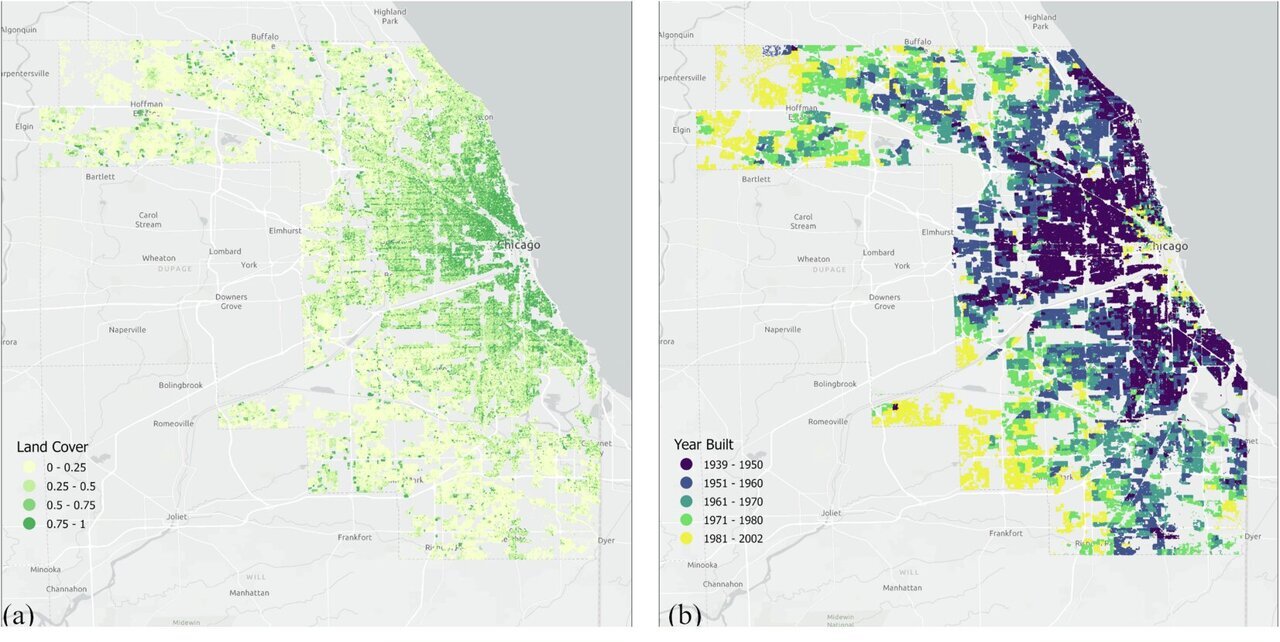Smarter Tools for Policymakers: Targeting Urban Carbon Emissions, One Building at a Time

Advancing Urban Sustainability Through AI and Simulation
Carbon emissions continue to rise at unprecedented levels, contributing to climate instability and deteriorating air quality in cities across the globe. Despite global pledges to achieve carbon neutrality, urban policymakers face significant challenges in implementing effective strategies to reduce emissions at the city level. In response, researchers from the University of Notre Dame are pioneering innovative approaches to address this urgent issue.
At the forefront of this effort is a team of researchers from the School of Architecture, the College of Engineering, and the Lucy Family Institute for Data & Society. They have developed an advanced simulation tool called EcoSphere, which leverages artificial intelligence (AI) to assess and mitigate carbon emissions from the built environment. The goal of this project is to create tools that evaluate the potential of both existing infrastructure and new construction to reduce carbon emissions, providing valuable data for decision-makers in urban planning.
Understanding Embodied Carbon
One of the key areas of focus for the research is embodied carbon, which refers to the greenhouse gas emissions associated with the production, transportation, and installation of building materials. This often overlooked aspect accounts for nearly 40% of energy-related CO₂ emissions. Ming Hu, associate dean for research, scholarship, and creative work at the School of Architecture, emphasizes the importance of addressing this issue in urban sustainability efforts.
Hu's research involves analyzing the life cycle assessments and renovation rates of over 1 million buildings in Chicago. By working with doctoral student Siavash Ghorbany, he has created a simulation model that captures real-world urban dynamics. This model helps identify future mitigation strategies for reducing carbon emissions, revealing that renovation and extending the lifespan of buildings can significantly lower embodied carbon.
A Bottom-Up Approach to Urban Emissions
The research team employed a "bottom-up" approach, aggregating detailed data from individual buildings, including materials, age, and structural characteristics. This method generated over 350,000 simulated scenarios, demonstrating that new construction produces up to 7,500 times more CO₂ than renovation. According to Hu, strategic building updates—whether through renovation or carefully planned development—can help mitigate these risks. However, increasing building size can offset potential carbon savings, highlighting the need for urban planning that prioritizes renovation, preservation, and efficiency.
Introducing EcoSphere: An AI-Powered Tool
To make this data accessible and actionable, the Notre Dame team collaborated with researchers Matthew Sisk, Chaoli Wang, and Siyuan Yao to develop EcoSphere, an AI-powered platform that integrates national building datasets, embodied carbon data, Google Street View, satellite imagery, and advanced machine learning techniques. This tool generates visualizations that help city planners and non-experts understand emissions data.
EcoSphere provides a user-friendly dashboard where users can explore simulation outcomes, analyze cost implications, and compare different mitigation strategies. Case studies conducted in Chicago and Indianapolis demonstrated how varying construction methods and policy decisions can impact a city's carbon footprint and economic costs.
Expanding the Impact of EcoSphere
Beyond city planning, EcoSphere has broader applications. It can serve as a teaching tool in school systems, helping students understand the environmental impact of carbon emissions. Additionally, it can be integrated with smart city and digital twin platforms for real-time decision-making and monitoring. Governments can use EcoSphere to forecast the long-term effects of policy choices and develop more effective carbon reduction regulations.
Hu remains optimistic about the potential of these tools to positively impact cities in the United States. He believes that detailed data and smart software can empower city planners to make informed decisions for a greener future.
Future Implications and Research
The research findings have been published in two leading journals: npj Urban Sustainability and Automation in Construction. These studies highlight the importance of systematic frameworks and simulation-based approaches in reducing urban embodied carbon emissions. As cities continue to grow and evolve, the integration of AI-driven tools like EcoSphere offers a promising path toward sustainable urban development.
Post a Comment for "Smarter Tools for Policymakers: Targeting Urban Carbon Emissions, One Building at a Time"
Post a Comment